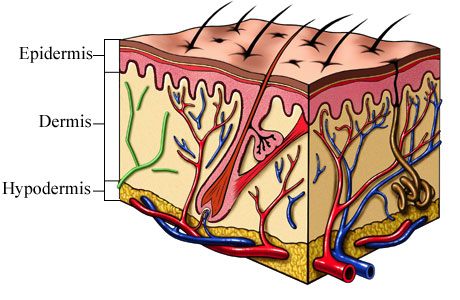A licensed esthetician is likely to partake in this conversation more than once during her career:
“What do you do?”
“I’m an esthetician.”
“Oh, you’re an anesthetist? Isn’t that interesting …”
Well, sometimes I put people to sleep, our esthetician thinks to herself …
The word esthetics comes from the Greek word aesthētikos, which means to have an appreciation of beauty. An esthetician (or aesthetician) is a person who is professionally interested in the health and beauty of the skin. Since my teen years, I have been obsessed with skin and eyebrows (not just mine, but everyone else’s), but I never realized I could make a living with it until my mid-thirties.
Estheticians, also known as beauty therapists in various parts of the world, sometimes suffer from an identity crisis – estheticians are not cosmetologists, who are trained in hair, skin and nails; and they are not massage therapists, although esthetics training covers rudimentary massage techniques.
Licensed estheticians are trained skin professionals, who have a passion for learning elemental details about the inner workings of the skin. Estheticians study anatomy and physiology, skin analysis, cosmetic chemistry, cosmetic ingredient formulations, various treatment modalities including laser and light therapies, how to prepare and care for skin undergoing deep resurfacing or other surgical procedures; as well as hair removal, massage techniques and make-up artistry skills.
A caring, compassionate individual who enjoys working closely with people, a licensed esthetician is not afraid to touch, or to examine skin flaws with her trained eye and to recommend professional products that she has thoroughly researched and believes will be best-suited for your skin care goals. Like a carpenter who admires his handiwork after the house is built, an esthetician will rejoice in your smooth, clear skin after a microdermabrasion or chemical peel series with home care she has recommended for you.
Here in the United States, esthetic school is a trade school. There are no national required standards in esthetic education, however, most states require at least 600 hours (approximately 4 months) of schooling before an esthetic student is allowed to take her practical and written exam for licensure. And although not a requirement for license renewal in most states, many estheticians choose to take continuing education classes throughout the year to stay current on the most up-to-date skin care products, equipment and treatments.
Possibilities for rewarding career options include working in a skin care salon, day or medical spa; running a solo esthetic practice; representing a skin care line; make up artist; salon or spa director or consultant; educator or school director; assistant to a dermatologist or cosmetic surgeon; on-site esthetician specializing in pre- and post-operative skin care; corrective skin care specialist or make-up artist for patients with burns or disfigurement; corporate esthetician advising research and manufacturing; beauty editor or writer; freelance writer and lecturer.
A typical day for an esthetician in a clinical environment will include skin care consultations and analysis, assessing each client’s personal skin care goals and recommending a plan of action to reach those goals. If the plan includes surgery or laser resurfacing, the esthetician will outline proper pre- and post-treatment care to help the client attain optimal skin health prior to surgery and to prepare the skin for post-procedure healing. This may include a series of microdermabrasion, chemical peel treatments or deep cleansing facials prior to surgery, followed by skin soothing facials after surgery. She will also document the client’s progress with before and after pictures, and record treatment notes in each client’s chart.
Oftentimes, in a physician’s office that has an attached medical spa, an esthetician is the manager of the product retail center, and will choose and sell product lines that best suit patient/client needs. In addition, the esthetician will provide make-up consultation services for post-procedure camouflage, if necessary. In a medical spa environment, under a physician or nurse practitioner supervision, a licensed esthetician may provide laser therapies such as laser hair removal, vascular-spider vein or intense pulsed light treatments (for wrinkles and pigment), and even endermologie treatments (machine massage for cellulite).
In a dermatology office, an esthetician may be utilized as more of a medical assistant, and the focus may be more clinical than in the cosmetic surgery or medical spa facility. Esthetician job responsibilities within this environment will include simple facial cleansings while the physician administers advanced peels, assisting during surgeries, ordering supplies and performing extractions.
Many entrepreneurial estheticians choose to operate their own independent practice, which works well for the business-minded individual. In order to succeed, the independent esthetician must have a solid business plan that includes marketing and promoting her business in addition to deciding product lines to carry and treatments to offer. Some solo estheticians will specialize in specific avenues of esthetics, such as waxing or makeup services or clinical facial treatments.
Calling an esthetician a “beautician” or a “facialist” is as outdated as calling a flight attendant a “stewardess” or an “air hostess.” Esthetics has come a long way since the days of Helena Rubenstein beauty spas in the early 1900’s. It is a growing field, one that will continue to remain strong as long as people feel the need to remove unwanted hair and fight the visible signs of aging.
